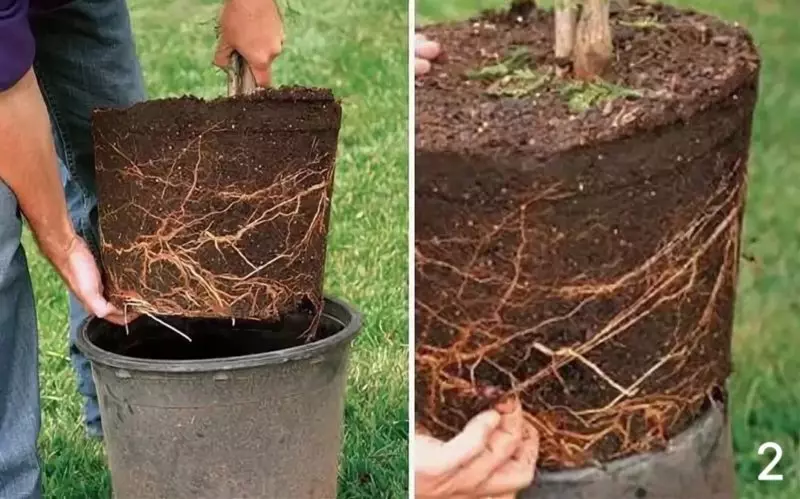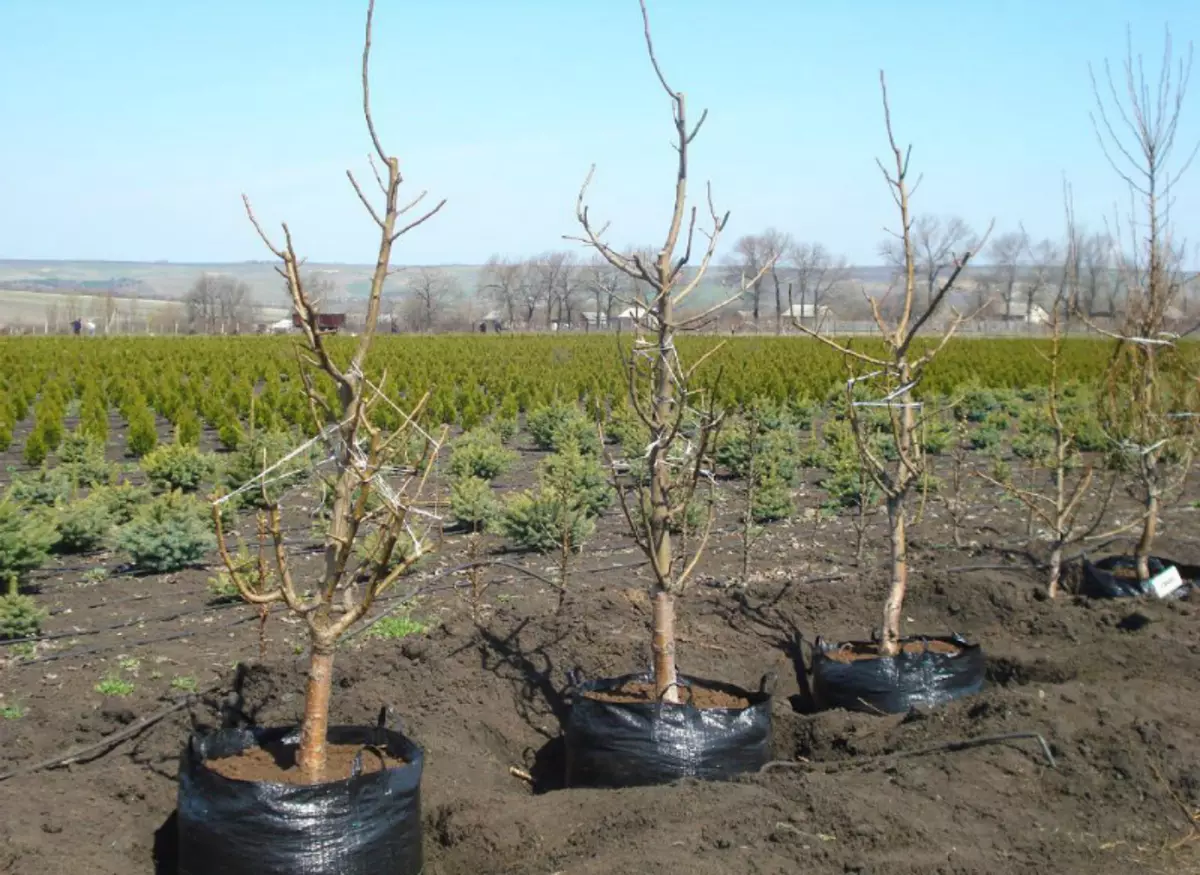Good afternoon, my reader. Saplings are divided into two types - with an open and closed root system, and at the first type there are explicit advantages over the second.

Seedlings with a closed root system. (Photo used from the site flowerstrees.ru)
Saplings with a closed root system can be planted into the ground throughout the season, the root system is quickly adapted and carries out in the soil. That is why such plants are more expensive. However, there are negotiated sellers who are trying to extract plants with an open root system for closed.
There are several ways to recognize a plant with a closed root system. Such plants first kept in the greenhouse in the seaside cassettes, and then, as far as the grown, is placed in containers along with a lore earth. These plants are kept in the shade, feed the preparations of prolonged action. When transplanting to a new container, the plant is moved there along with the substrate.
To make sure that you have a plant with a closed root system, you need to spend a small test - to take a seedling for the svolik and try to remove it from the tank. If the seedlock sat in a container a couple of days before the sale, it will easily pop up from the soil, and its roots will be deformed. If the plant was grown in this container, it will be extremely difficult to remove it. If the attempt is crowned with success, the root will pull the big room.

Tree planting. (Photo used from the site allremont59.ru)
Once you make sure that you have a closed root system, you need to pay attention to other important points:
- The presence of kidneys that bloom in early spring. This suggests that the plant develops harmoniously in its natural biological rhythms.
- The container must be large enough. Plants grown in miniature containers are often fed to growth stimulants, so hardly adapt to another soil.
- The presence of small roots, visible from the drainage holes pot. If the roots are thick, it suggests that the seedling is too closely in a small container.
- The absence of spots, cracks, scratches and other defects on the crust of the plant. This suggests that the plant is great and well adapted to the soil.
- Saplings should not be broken, curves or snakes.
If all the signs you understand that you have a plant with a closed root system, you can freely acquire it for home use. These plants have only one disadvantage - a high price, but all costs easily pay off.
